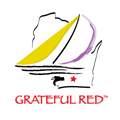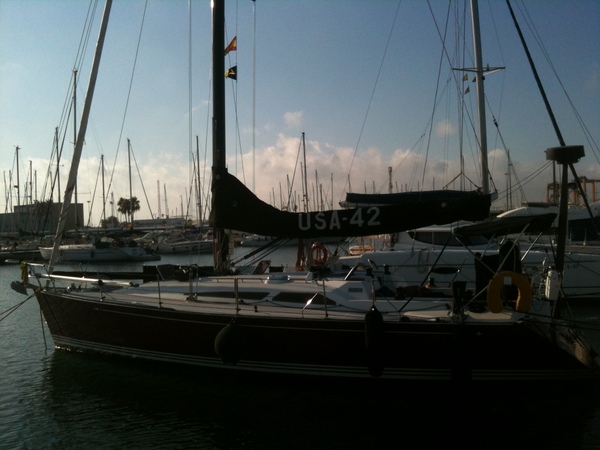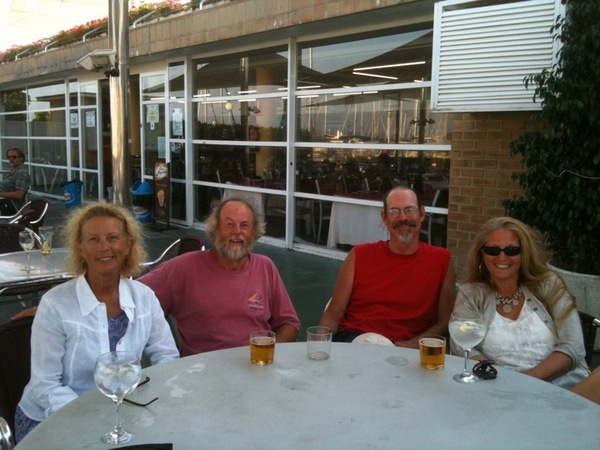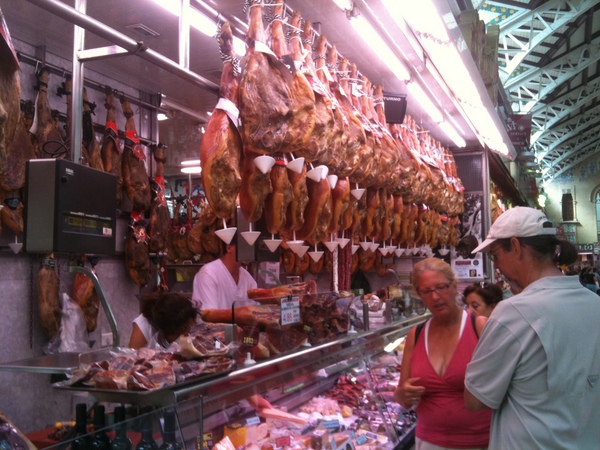Tunisia – Sidi Daoud, Visit to Kerkouane
After the Roman Caves, our taxi guide started to take us back to the port. We asked him if he would take us to the Pre-Roman Ruins in Kerkouane. He said he could not and would drop us off in the village before the port and we could get another taxi to take us to Kerkouane. After dropping us off, Molly negotiated for 60 Denar with another taxi to take us to a ATM in Kabalia, then to the Pre-Roman ruins.

Behind trucks loaded with tomatoes going to a cannery
I will let Wikipedia explain Kerkouane to you:
Kerkouane (Arabic: كركوان; occasionally Kerkuane) is a Punic city in northeastern Tunisia, near Cape Bon. This Phoenician city was probably abandoned during the First Punic War (c. 250 B.C.), and as a result was not rebuilt by the Romans. It had existed for almost 400 years.
Excavations of the town have revealed ruins from the 4th and 3rd Centuries BC. Around the site where the layout is clearly visible, many houses still show their walls, and the coloured clay on the facades is often still visible. The houses were built to a standard plan, in accordance with a sophisticated notion of town planning.
A sanctuary has some columns preserved, and in a small atrium parts of mosaics are found. Curbstones, doorsteps, thresholds, and floors of simple mosaic layers are found all over the ruins. Still archaeologists work on the Kerkouane site, but it is believed that the best parts have already been discovered.
Kerkouane was one of the most important Punic cities, with Carthage, Hadrumetum (modern Sousse) and Utica.

Bathtub in one of the structures. Very advanced water system throughout the ruins
According to my guidebook, many homes were single-story with steps leading to a rooftop terrace. On the floor of several houses, you could see an early form of mosaic known as opus signinum, in which fragments of white stone were inserted amongst the red paving. One house had a beautiful white Tanit (a god) symbol set into the floor.

Great example of their great use of stone

Fred, Paula, Kristine & Ken (photo courtesy of Molly!)
It was a very interesting visit to the ruins and we took some time to visit the museum there also. This taxi squeezed all 5 of us in his taxi even though, we assume, he was not supposed to do so. He did NOT want to miss out on our fares.
When we returned to the Port the “men” filled the boat with Diesel, one jerrycan at a time and we made chicken Quesadillas for dinner. We paid 60 Denar per night for our stay and left around 6:45AM to head to Sidi Bou Said Marina, Tunisia.
Tunisia-Sidi Daoud
Tuesday, July 19th, we sailed half of the day and motored half to get around the Cap Bon to Sidi Daoud. Sidi Daoud is home to a very small fishing harbor where they had a Tuna cannery. The small fishing harbor that also is home to the Sidi Daoud Cannery is stinky and full of flies, but was filled with unknown treasures we were yet to discover.

Giving our passport information to Authorities
We were greeted by the Harbor Master and also met the National Guard and Customs officials. The port authorities went through a very complete check of our passports, the boats paperwork, all our electronics aboard, and various other information they thought they should ask. One of the officials brought his young son who sat quietly on his lap as we were asked to fill out many forms complete with carbon paper for their duplicates. After they left, we seemed to have one or more civilian looking “guards” standing on the Quay 10 feet from our boat. We think they were watching to see if we were going to do any drinking, or maybe they were just plain curious. We kept any “beverages” in cups and produced no cans for them to see in any event.

Fred and Ken getting our bag of ice

Checking the weather at the Harbor master’s office

Sidi Daoud Cannery in the background
That evening after we secured ice from the main Ice building on the quay, Ken and Fred proceeded to find our their new best friend, Omar. Omar decided that he would offer us something special for a good price, and when his friend produced 2 very large lobsters, we could not refuse! Despite the miserable location at the dock with the flies and smells and the curious, we had a outstanding dinner of all the lobster you could eat, fresh bread and loads of butter. The Tunisians there just stood and watched us as we ate by candle light. After dinner, Ken and Fred walked around the small harbor and apparently were invited by the local fisherman to eat some couscous. It seemed to be quite a honor to be asked so they did not refuse. Ken says that their couscous takes several days to prepare and is highly anticipated.

Discussing price for the two lobsters
Wednesday was promising high winds so collectively we made the decision to delay departure for another day and Omar called a taxi to take us to the Roman Caves north of Sidi Daoud. It was a beautiful coast, but the caves were closed because they had been deemed to dangerous (not entirely sure why they still promote them as a tourist site except to get you there to eat at the restaurant). We did eat lunch there and met a very nice couple from Tunis who were on holiday for the week. Jaz (the gentleman) told us that he taught English and was very happy to talk to us in order to keep the English he knew as genuine as possible. He later offered to be our tour-quide if we came to Tunis or Carthage that week Thursday or Friday. We took his number and promised to give him a call if we did so.

































